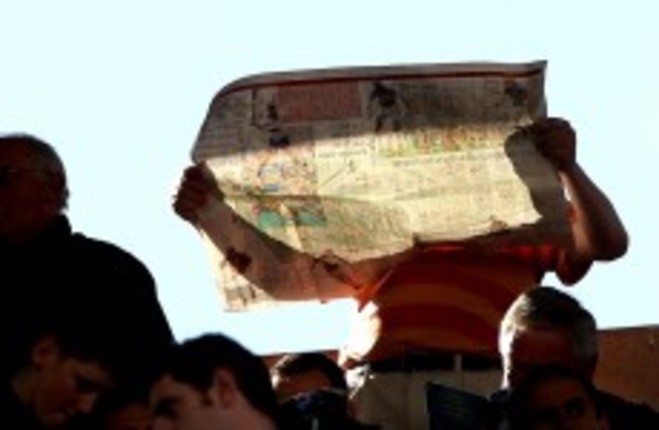1. “Most people think perfection in bowling is a 300 game, but it isn’t. Any reasonably good recreational bowler can get lucky one night and roll 12 consecutive strikes. If you count all the bowling alleys all over America, somebody somewhere bowls a 300 every night. But only a human robot can roll three 300s in a row—36 straight strikes—for what’s called a “perfect series.” More than 95 million Americans go bowling, but, according to the United States Bowling Congress, there have been only 21 certified 900s since anyone started keeping track.
Bill Fong’s run at perfection started as most of his nights do, with practice at around 5:30 pm. He bowls in four active leagues and he rolls at least 20 games a week, every week. That night, January 18, 2010, he wanted to focus on his timing.”
In a Chicago bowling alley one night, one man came so close to perfection that it nearly killed him, according to Michael J Mooney in D Magazine.
2. “In Hannover, a mustachioed man with a bookshelf of a belly stepped into the dining car of a train headed for Berlin with the Bild, perhaps Germany’s most infamous tabloid, folded under his arm. “Another Final Without Us,” the first half of its headline read. “Can one still believe in Jögi?” He pored over a post-match breakdown the entire way to the capital city, hunched over and frozen, breaking away only for another wheat beer. He had four in just over an hour.”
We need to talk about Germany manager Jogi Loew, says Grantland’s Chris Bevan.
3. “Gael Bigirimana was walking to the supermarket with his brother to buy some milk when he spotted Coventry City’s academy training facility. The following day he went there and asked for a trial. Slightly bemused, the coaching staff looked at the smiling yet determined 11-year-old with the broken English and explained that the club did not just take on young players who turned up unannounced. He would have to be scouted like everybody else. Running home afterwards, having left details of the school he attended and buoyed by the promise that somebody from Coventry would come to watch him play, Bigirimana was surprised when a member of the coaching staff stopped him. ’They asked if I had all the equipment, boots, shin pads and stuff like that,’ Bigirimana told BBC Sport. ‘I said yes but I did not. They said they saw me running fast but to tell you the truth I was jogging.’”
Paul Fletcher profiles Coventry City’s boy from Burundi in one of the more uplifting stories of the week.
4. “The writing of history and sportswriting might not appear to share too much at first thought. Historians sit in quiet archives, calmly analysing documents revealing past events and dynamics, thoughtfully arranging them into causative and explanatory patterns, trying to answer how things came to be the way they were. History itself moves quickly, but history-writing is a slow process: not only does it take a long time but historians also prefer to wait until events are quite a bit past to analyse them (a guiding element of this project). Sportswriters on the other hand live and work first-hand, either on-site or watching events as they unfold, instantly having to react to the quick-moving, dramatic, competitive world of sports. Explanations and judgements are more proximate, causation more easily revealed by the fact that sport will, unlike history, always produce clear winners and losers. Sport is considered a pretty crude metaphor for historical events, its black-and-white, A vs B, winner and loser simplicity hardly an accurate reflection of history, the infinite shades of grey.”
Sport and History have a lot in common, according to this excellent site. What can Lukas Rosol’s upset over Rafael Nadal at Wimbledon reveal about the way history works?
5. “It’s almost 2am and, understandably, they’re still enjoying their latest landmark victory with old friends. David Villa and Carlos Puyol are in there smiling, Placido Domingo is in there singing. Iker Casillas and Sara Carbonero aren’t kissing – to the disappointment of the Spanish media – but they are hugging. Typically, the players are in no rush to leave. That unhurried feel, however, suits the whole atmosphere of the night. This isn’t the energetic jubilation of 2008 or the emotional relief of 2010. There’s a serenity about the celebrations in Kiev, a sense of professional satisfaction. Even completion. They have, after all, made history.”
Forgive us if we include one of our own pieces; Miguel Delaney explains what a post European Championship final mixed zone looks like.

